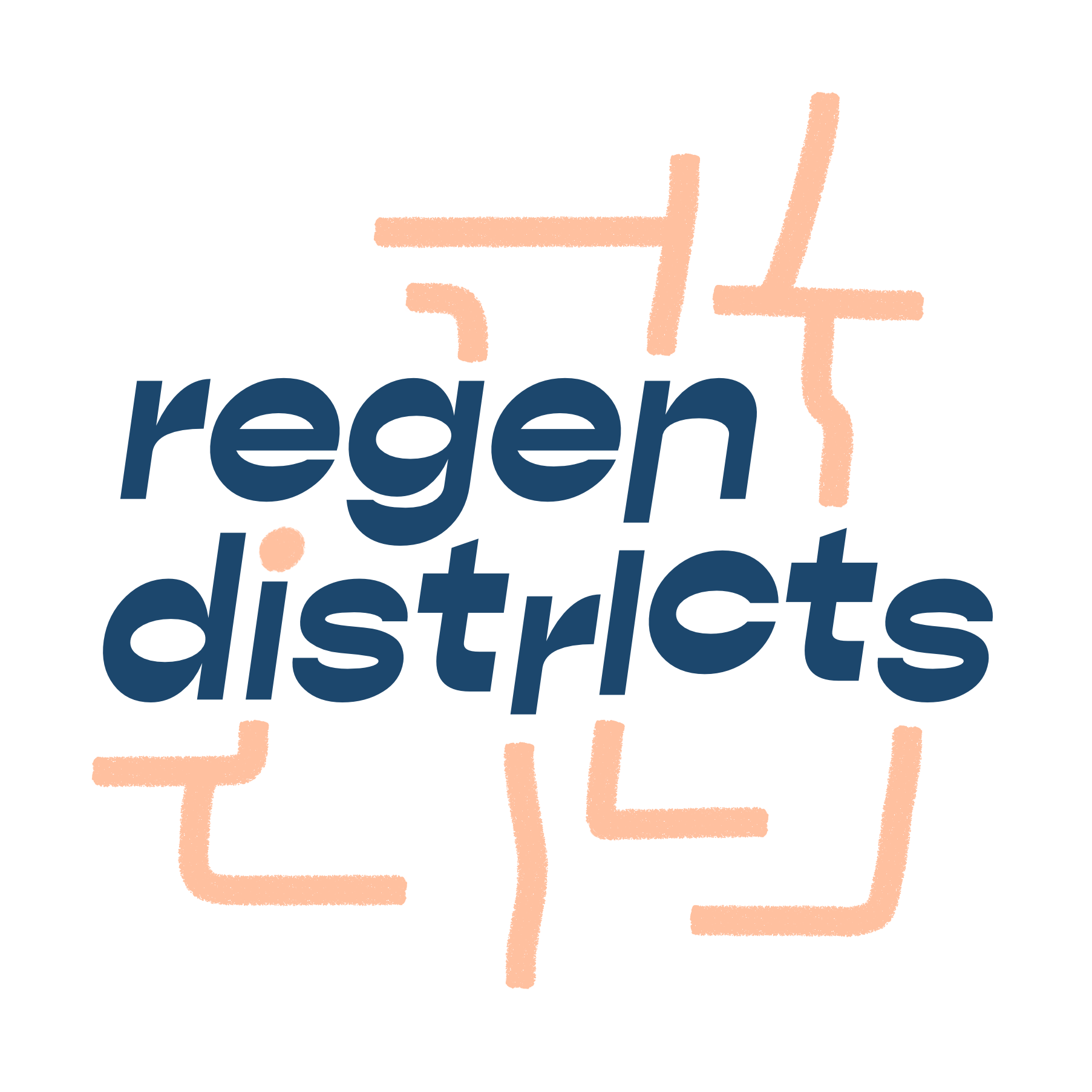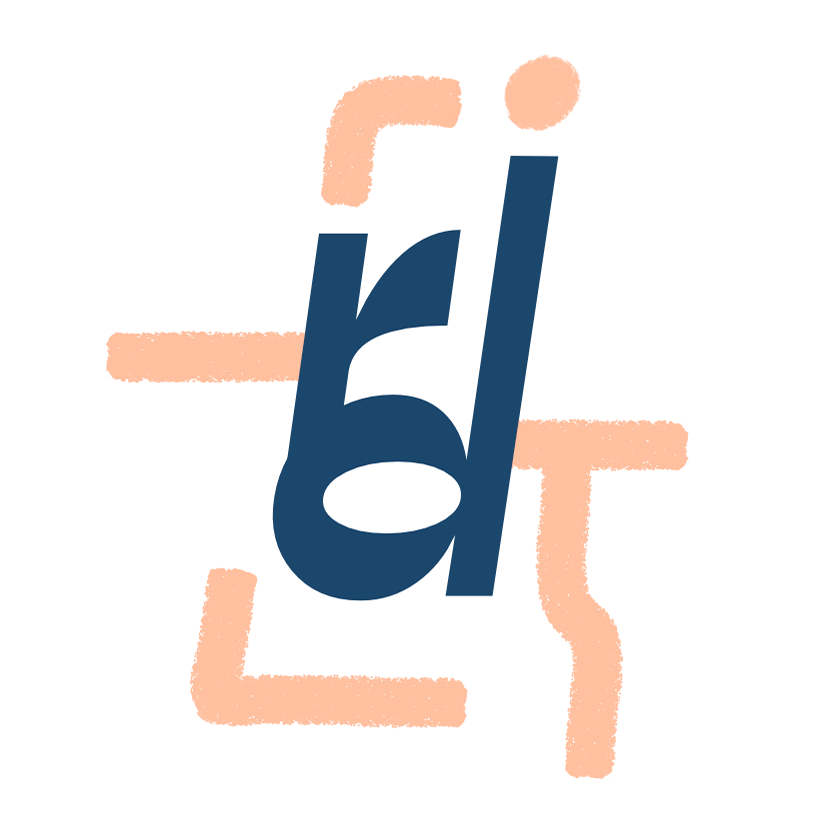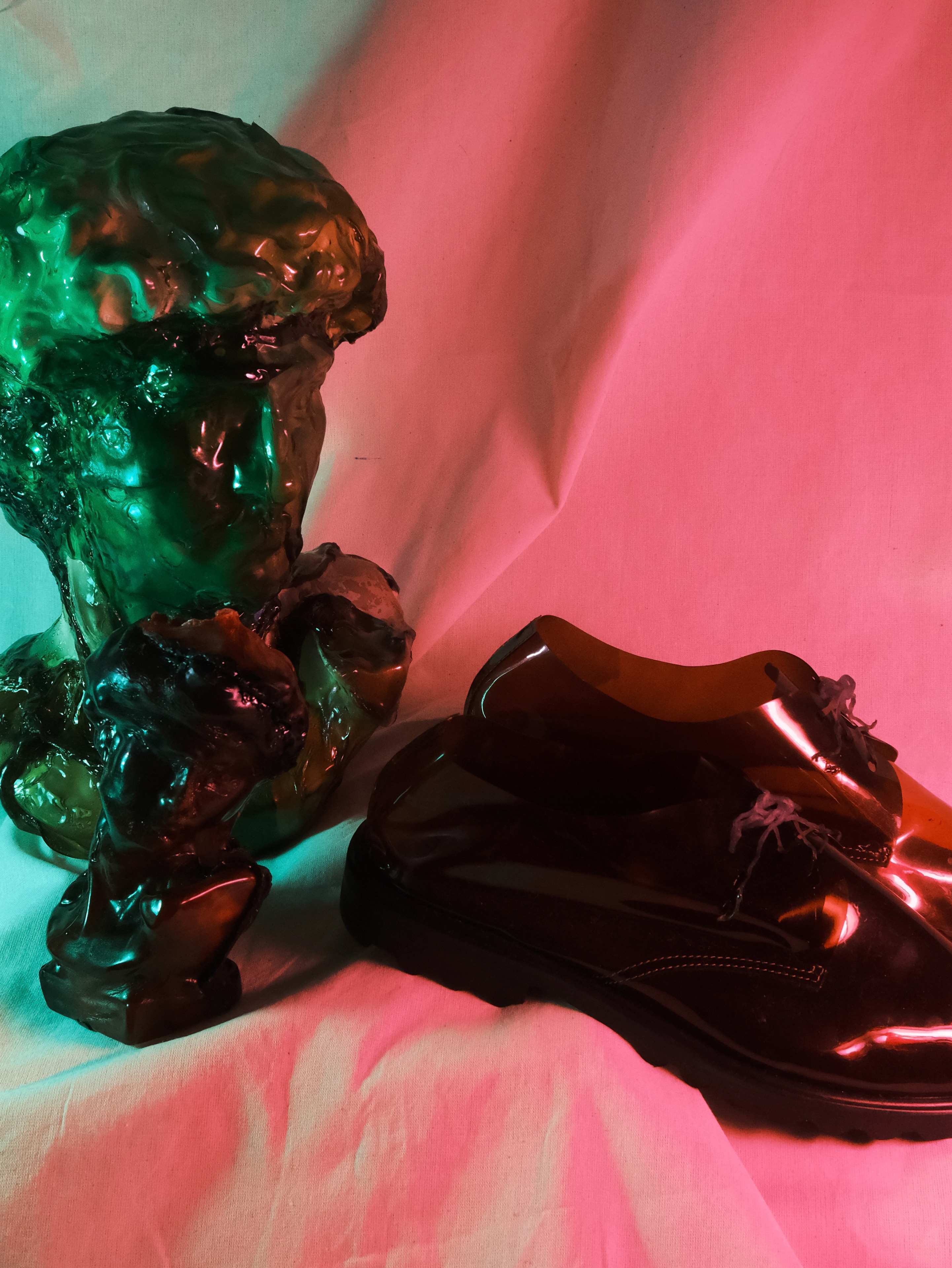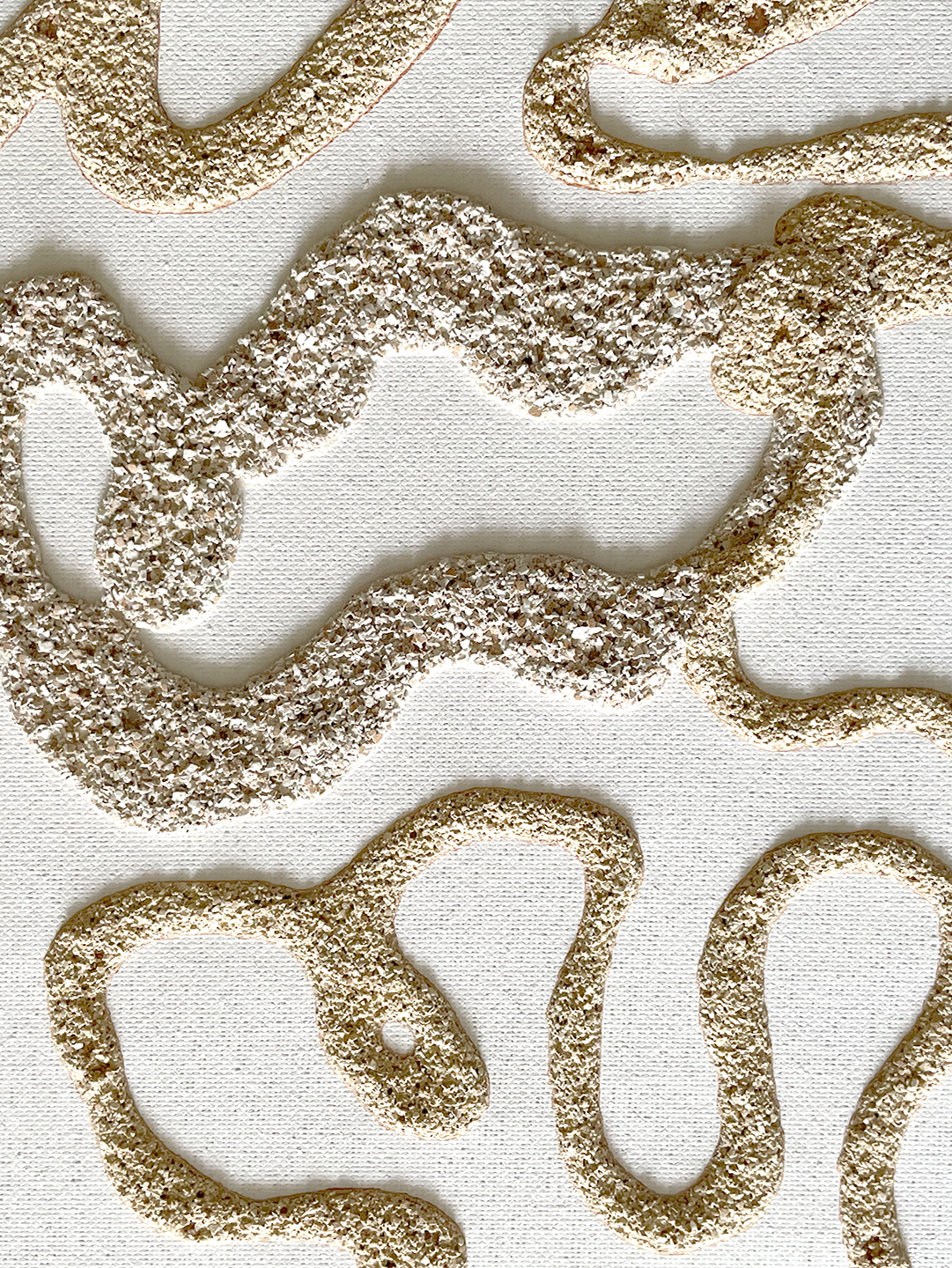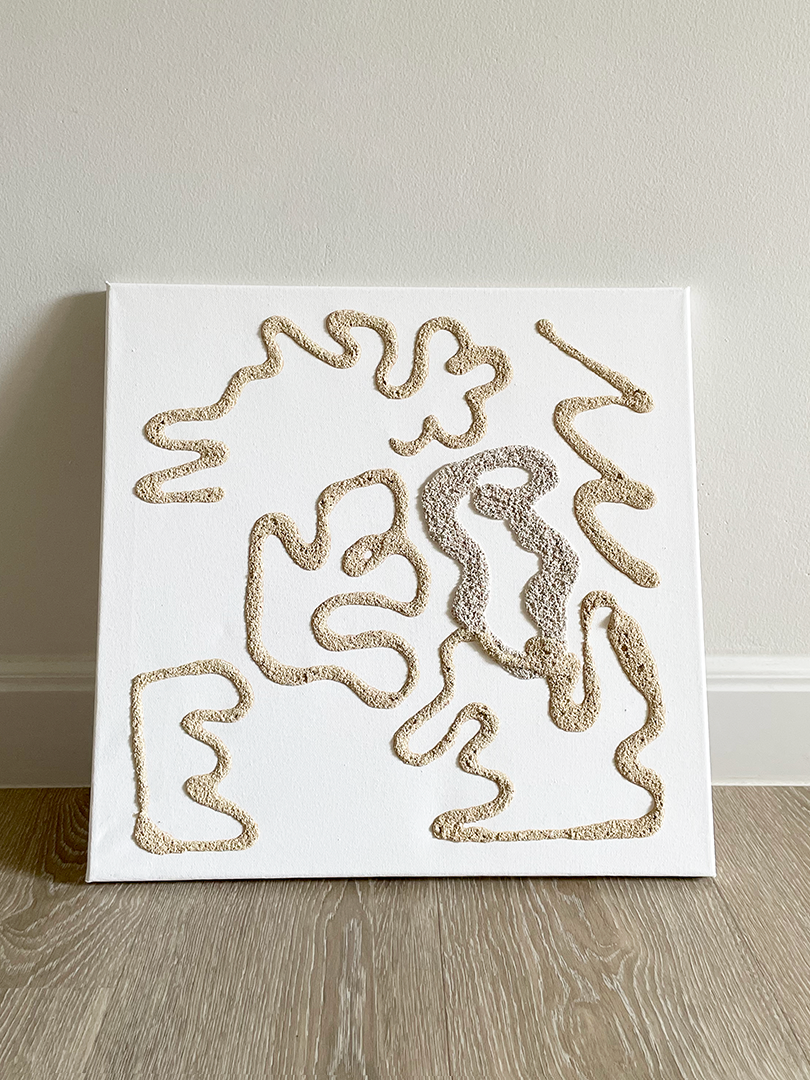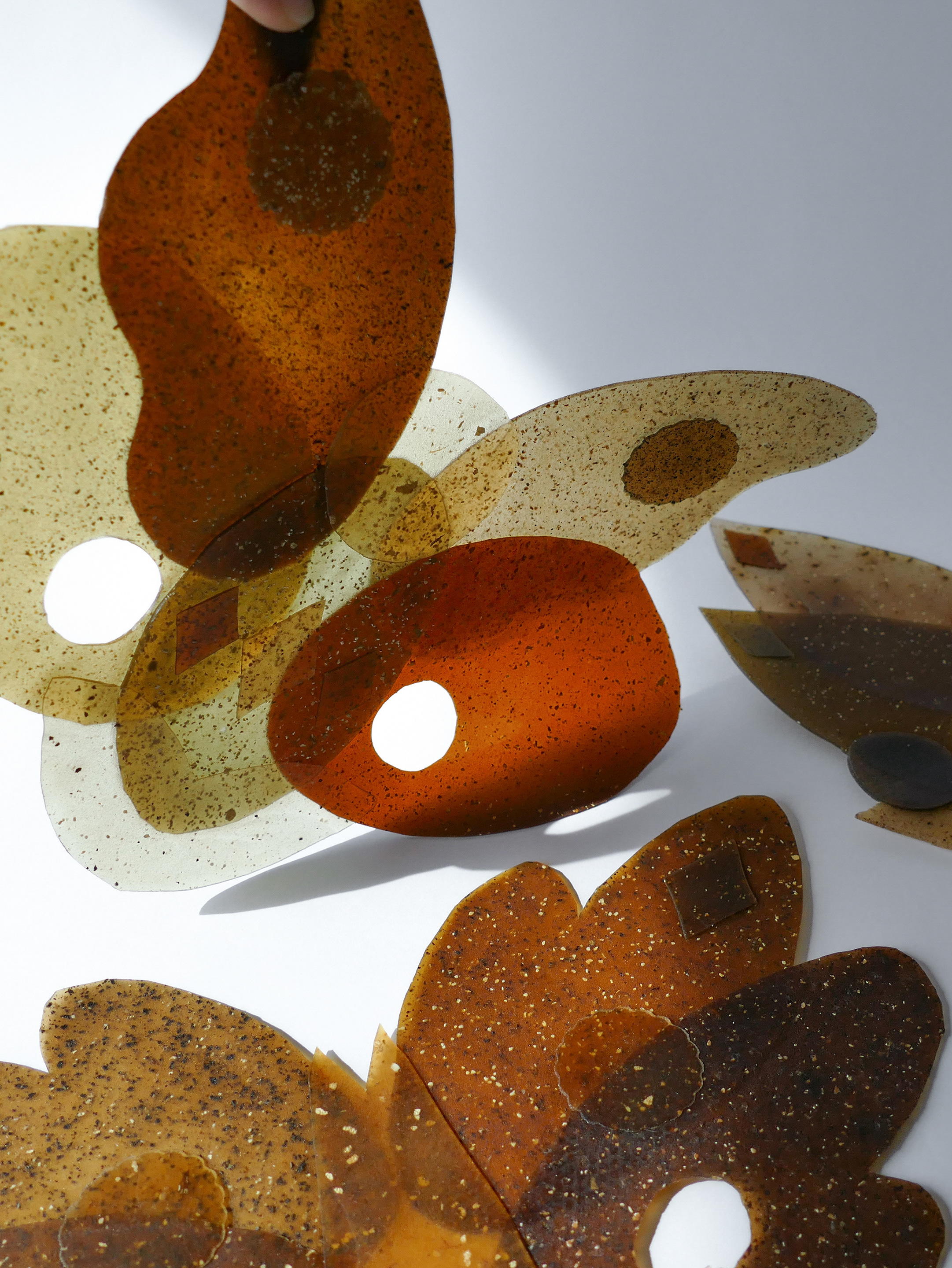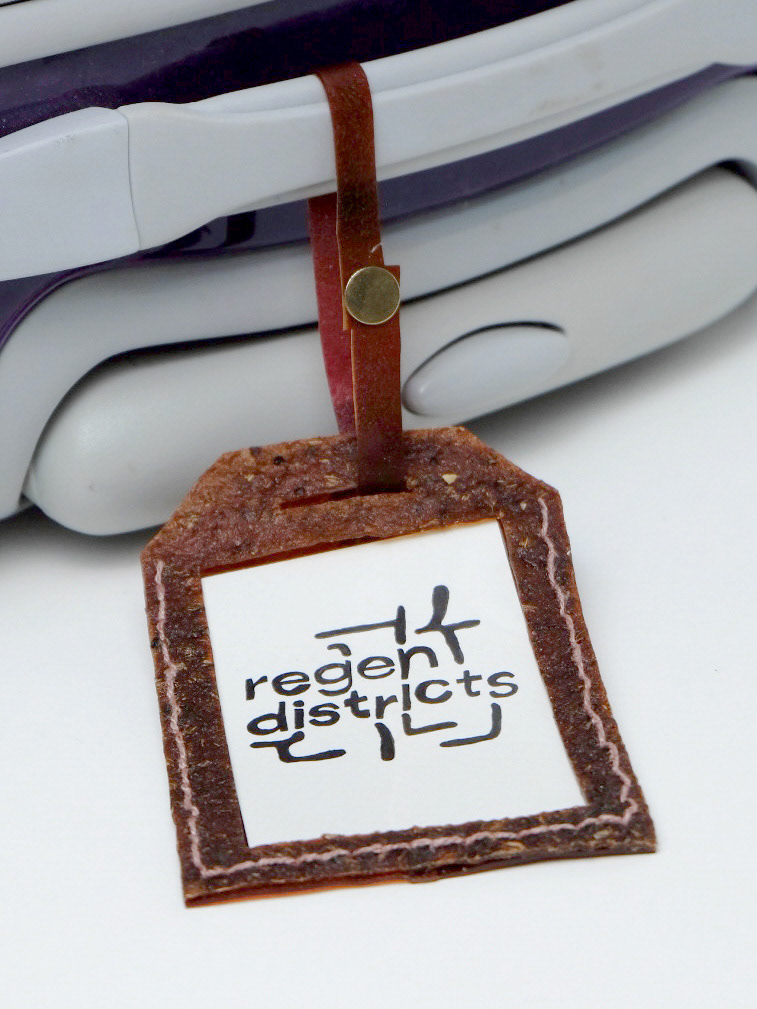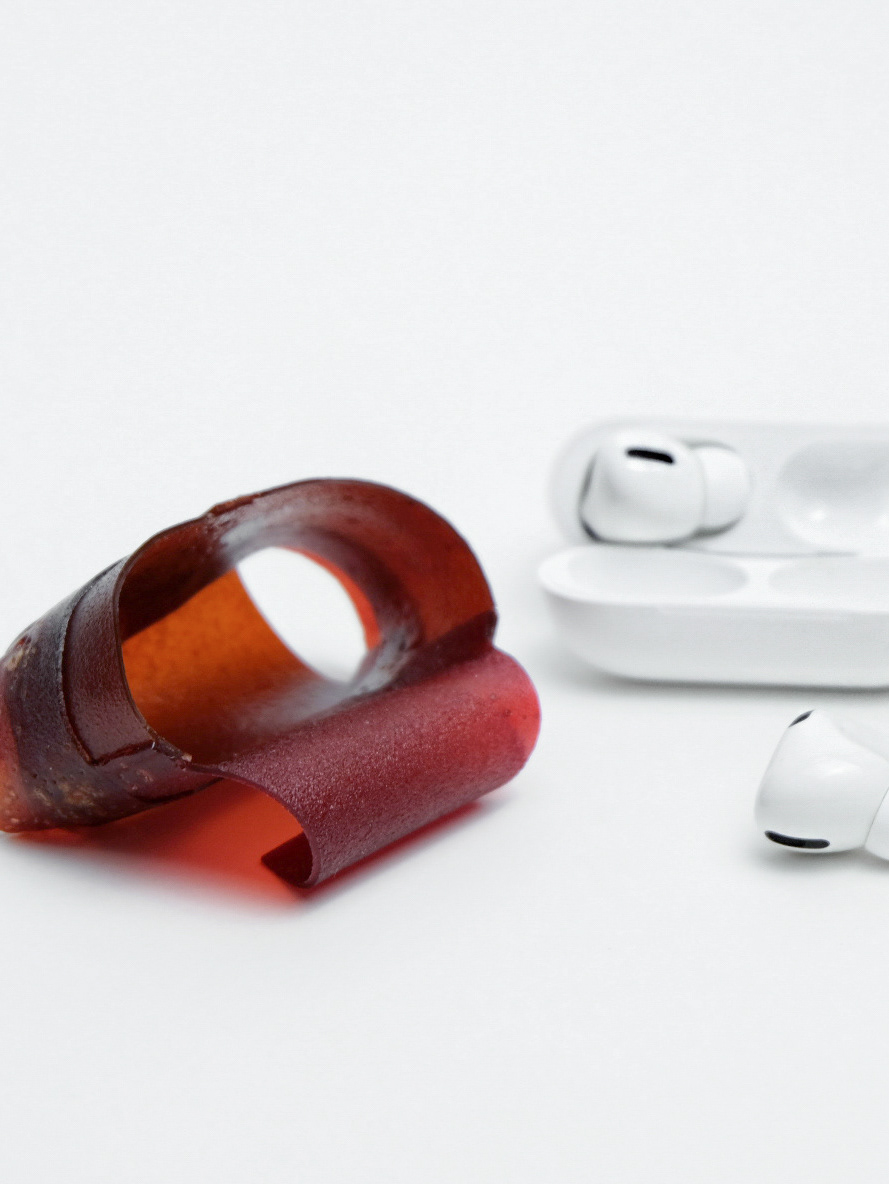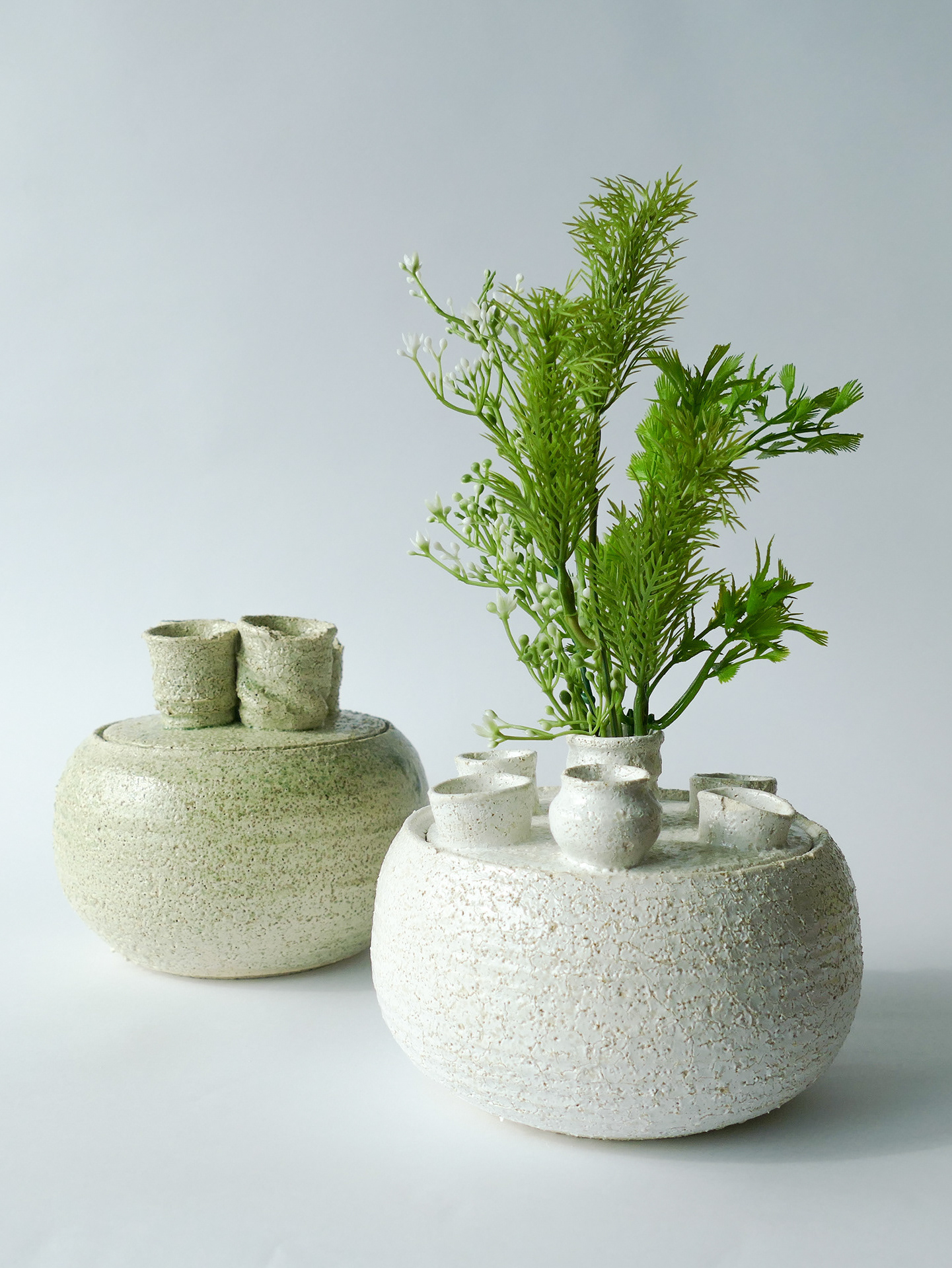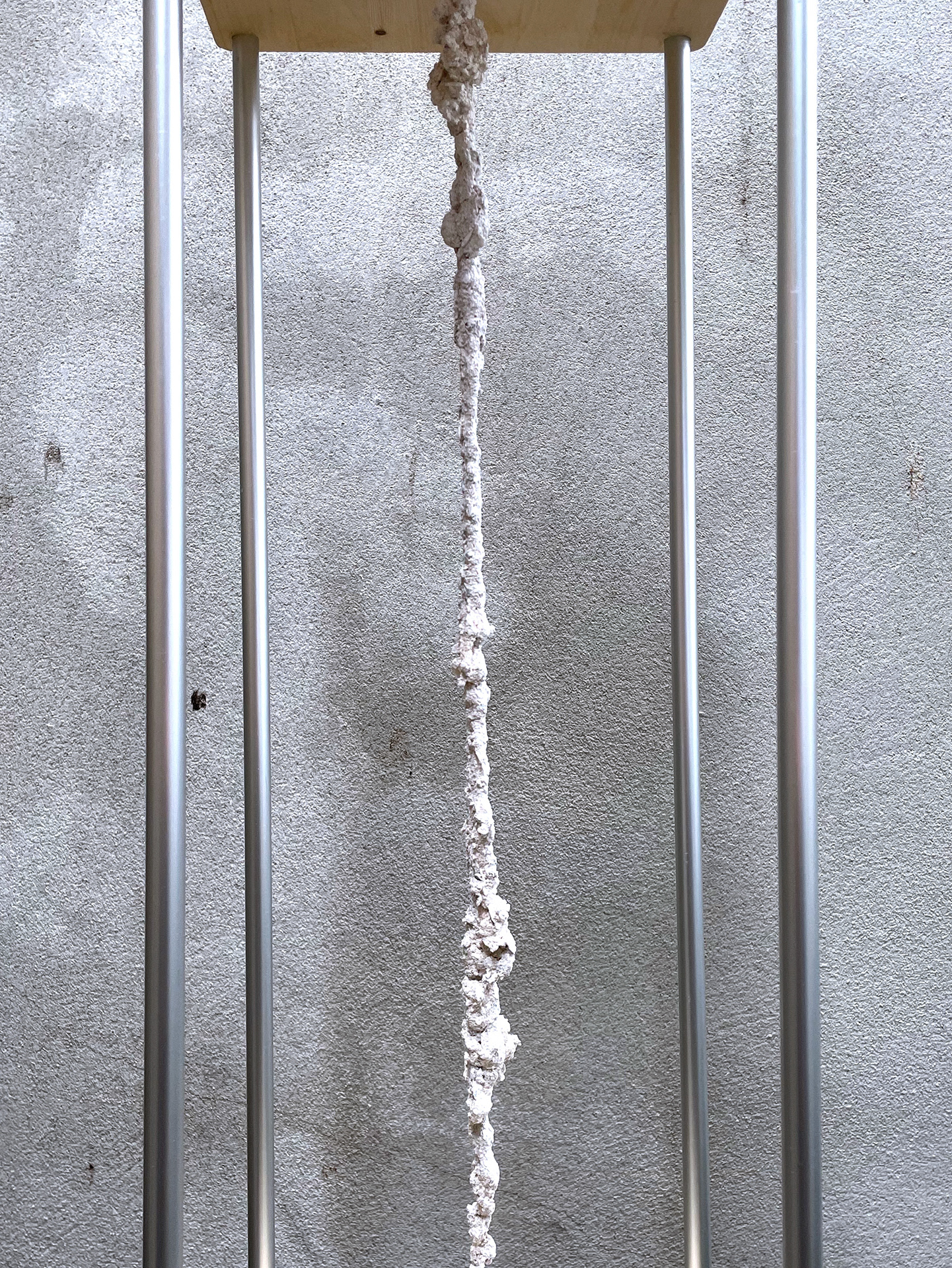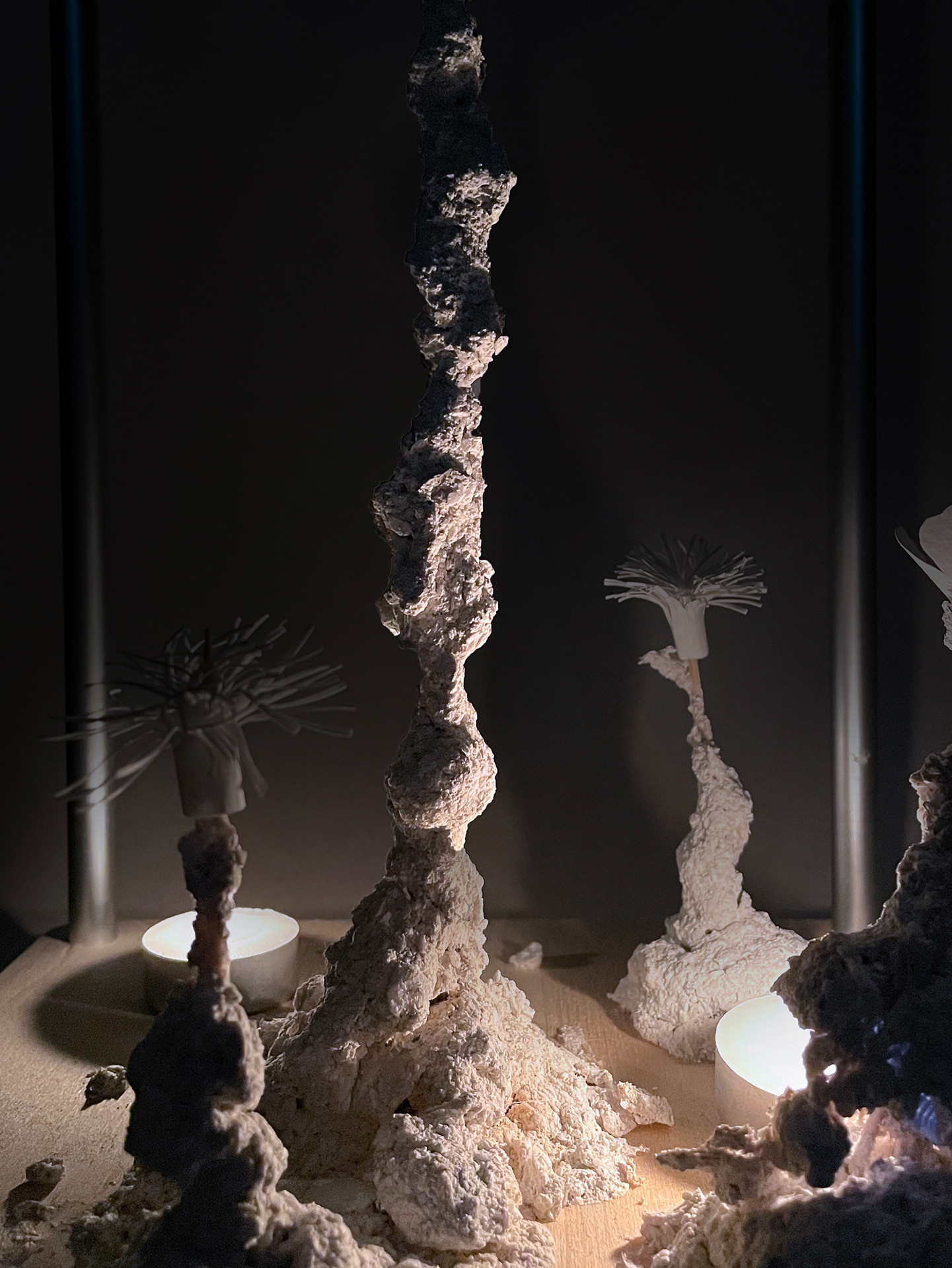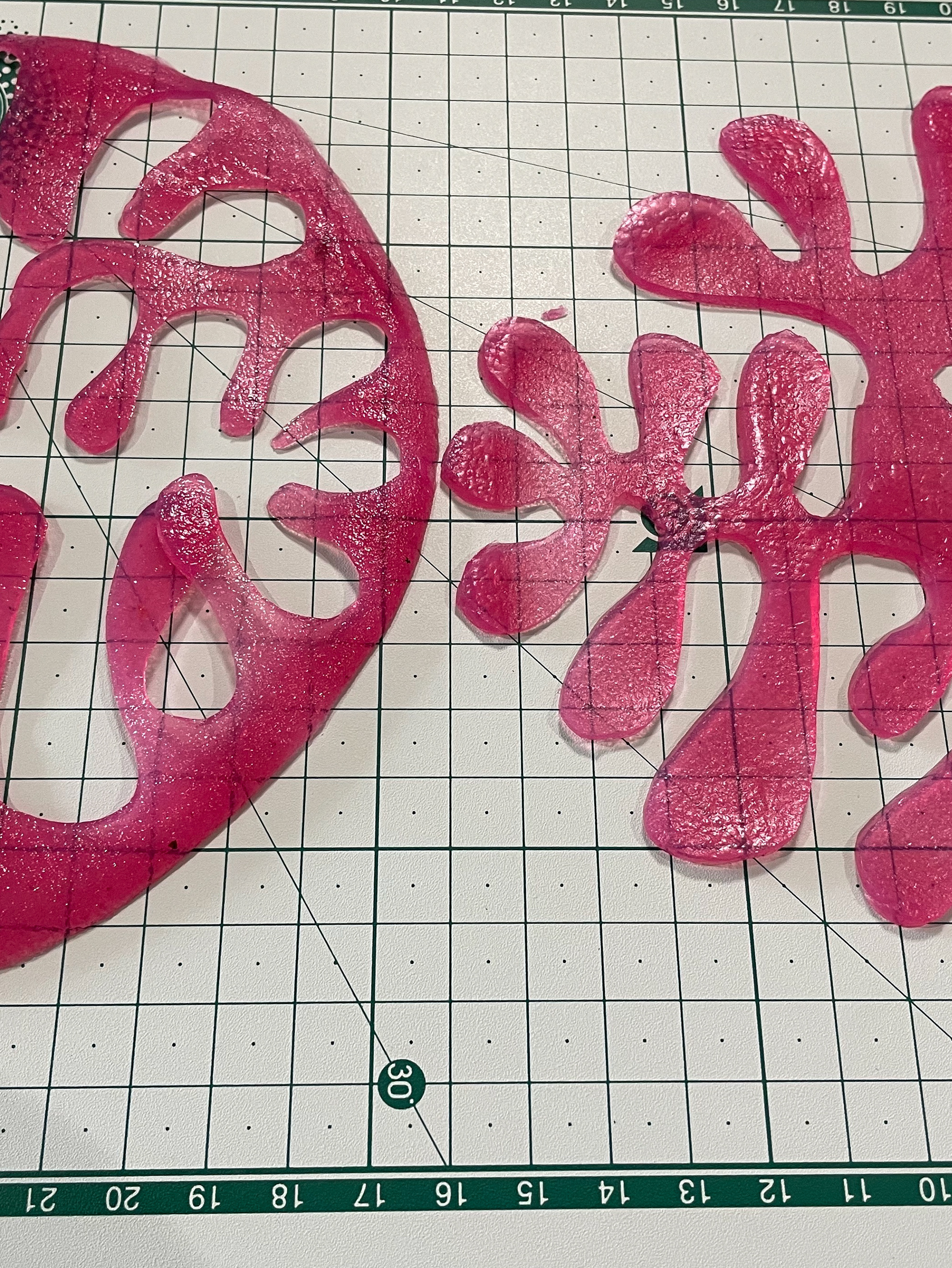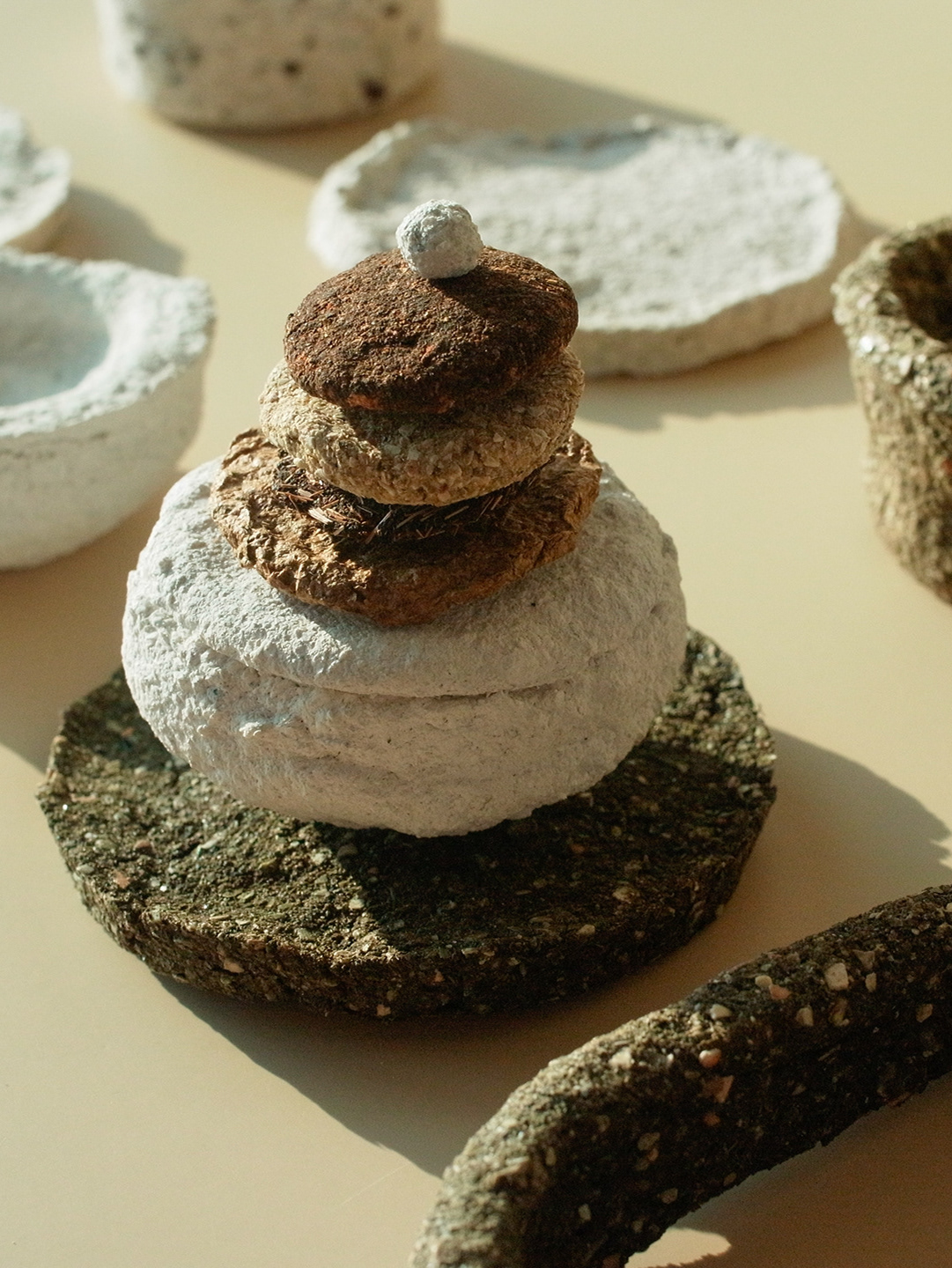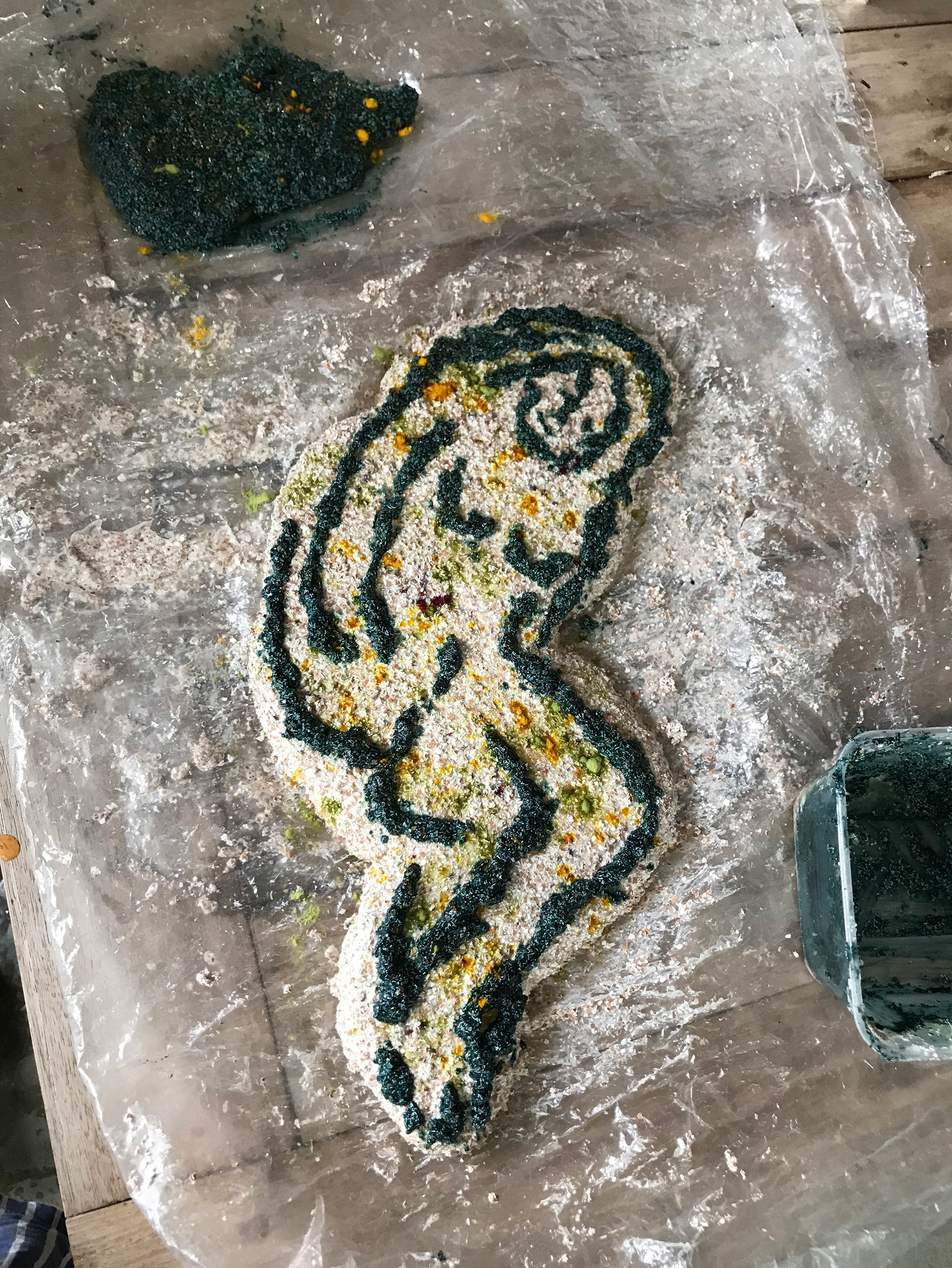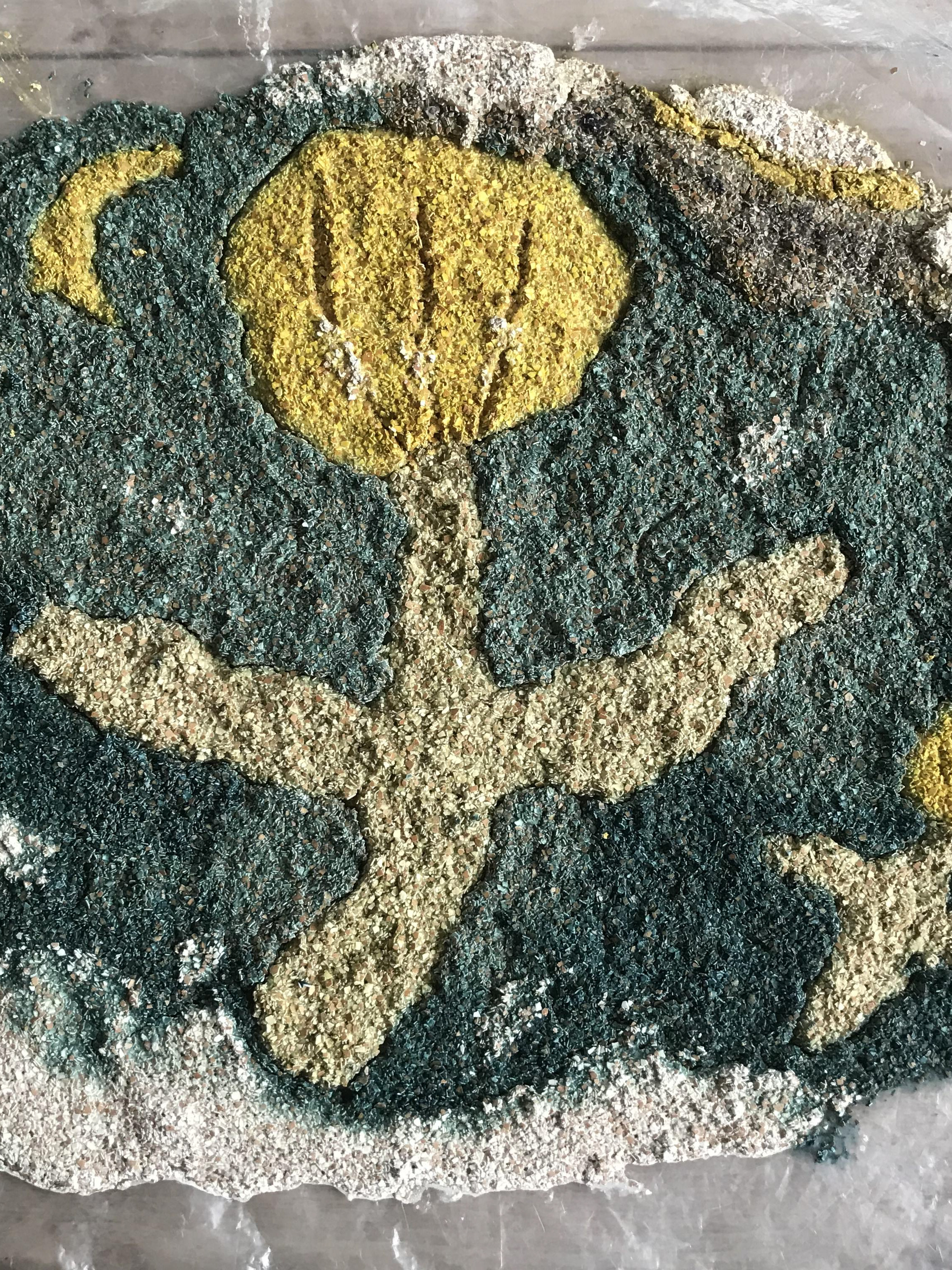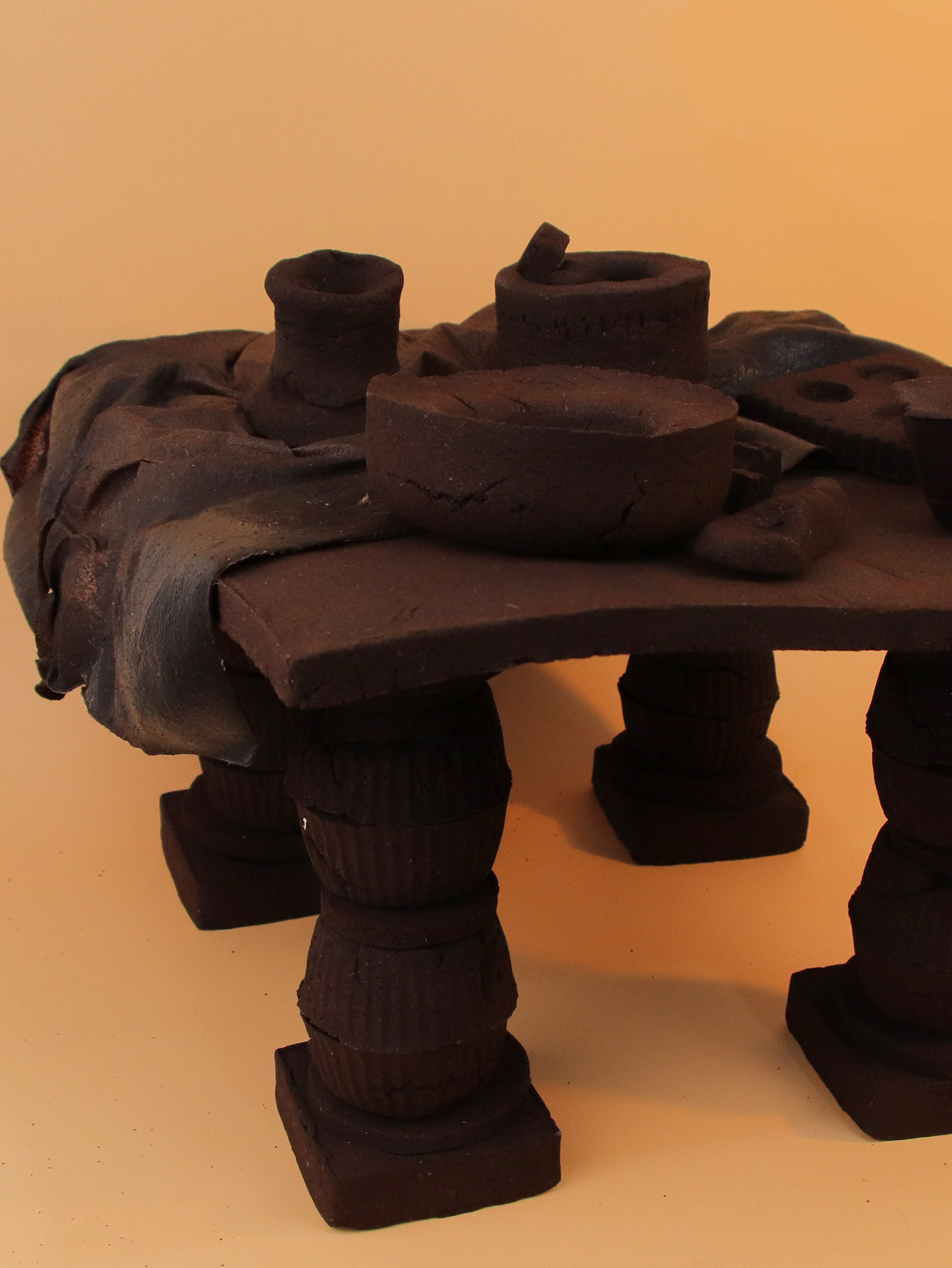As a workshop facilitator for Regen Districts, I made various samples by mixing food waste collected from partnered cafes/restaurants with 2 biodegradable binders: sodium alginate and xanthan gum — to learn about their properties, so that I can share insights and overview with the attendees.
After experimenting for quite a while, I designed a phone holder because I was curious to see if these biomaterials I had been making were strong and robust enough — I just simply wanted to have one at my desk as well. I then made the mould from a 3D printer and tried with different ingredients; vegetable/fruits residue and coffee/chocolate husks were my favourites! — mainly because of their appearances and smells.
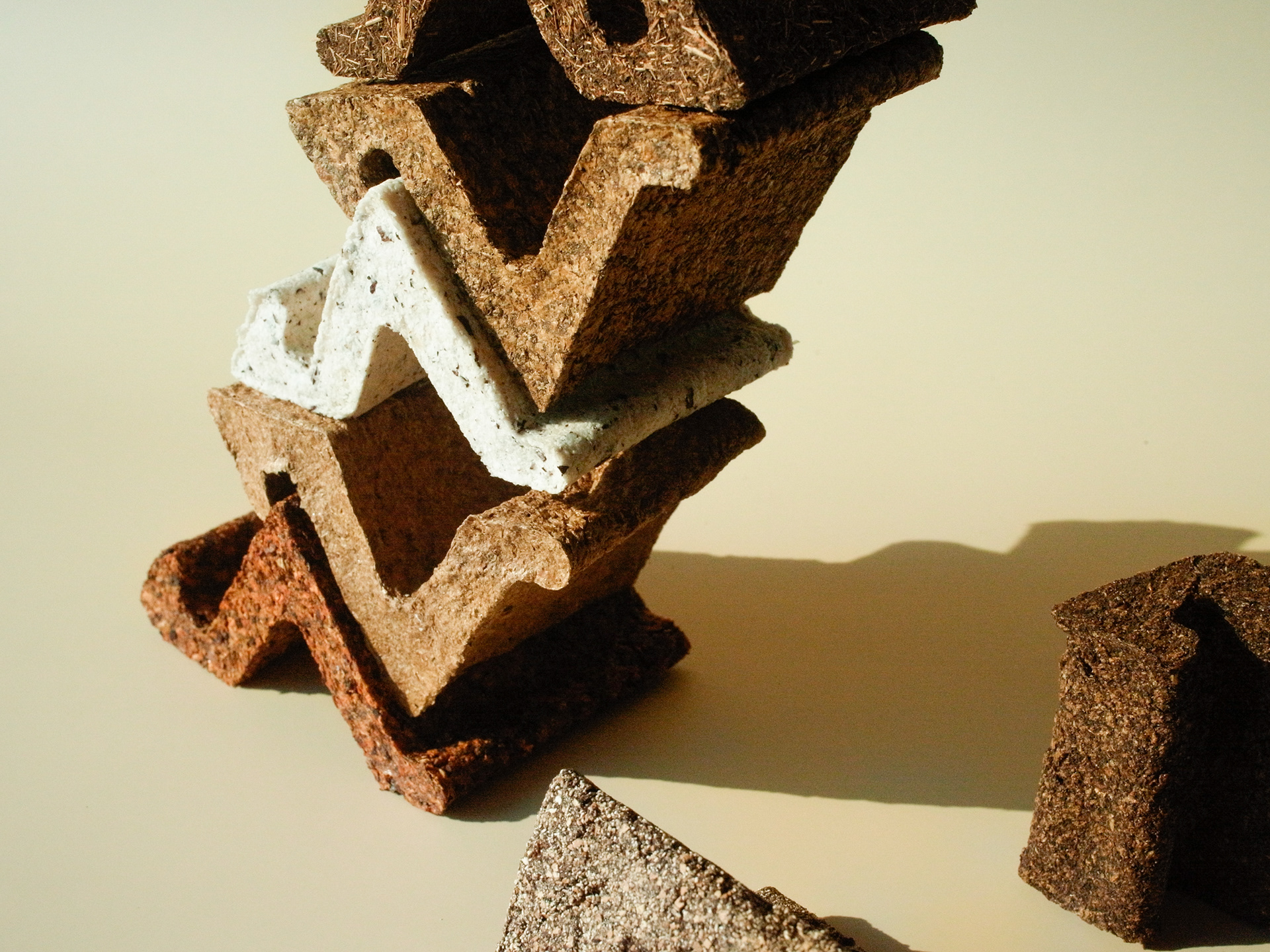
ในฐานะที่เป็นผู้จัดทำเวิร์กชอปของโปรเจคนี้ จะต้องมีการทดลองทำวัสดุตัวอย่างโดยการใช้วัสดุประสานที่สามารถย่อยสลายได้ตามธรรมชาติ (sodium alginate และ xanthan gum) บวกกับส่วนผสมต่างๆจากเศษอาหาร (ขยะอินทรีย์) ของร้านคาเฟ่และร้านอาหารที่ได้เข้าร่วมเป็นพาร์ทเนอร์กับเรา เพื่อเรียนรู้เกี่ยวกับคุณสมบัติของวัสดุและนำความรู้กับข้อสังเกตุมาแชร์ให้กับผู้เข้าร่วมเวิร์กชอป (ศิลปิน และ นักออกแบบ)
หลังจากที่ทดลองทำวัสดุมาระยะหนึ่ง ก็ได้ออกแบบที่วางโทรศัพท์ขึ้นมา เนื่องมาจากการตั้งคำถามว่าวัสดุชีวภาพนี้จะมีความแข็งแรงเพียงพอหรือไม่ อีกเหตุผลคือผู้ออกแบบแค่อยากได้ที่วางโทรศัพท์มาใช้ที่โต๊ะทำงานเอง โดยได้ทำแม่แบบจากเครื่องพิมพ์สามมิติ (3D printer) แล้วนำมาทดลองใช้กับส่วนผสมต่างๆ เช่น เศษผักผลไม้ เปลือกกาแฟ เปลือกช็อกโกแลต ซึ่งวัตถุดิบจำพวกเปลือกจะมีกลิ่นหอมและมีโทนสีที่สวยงาม

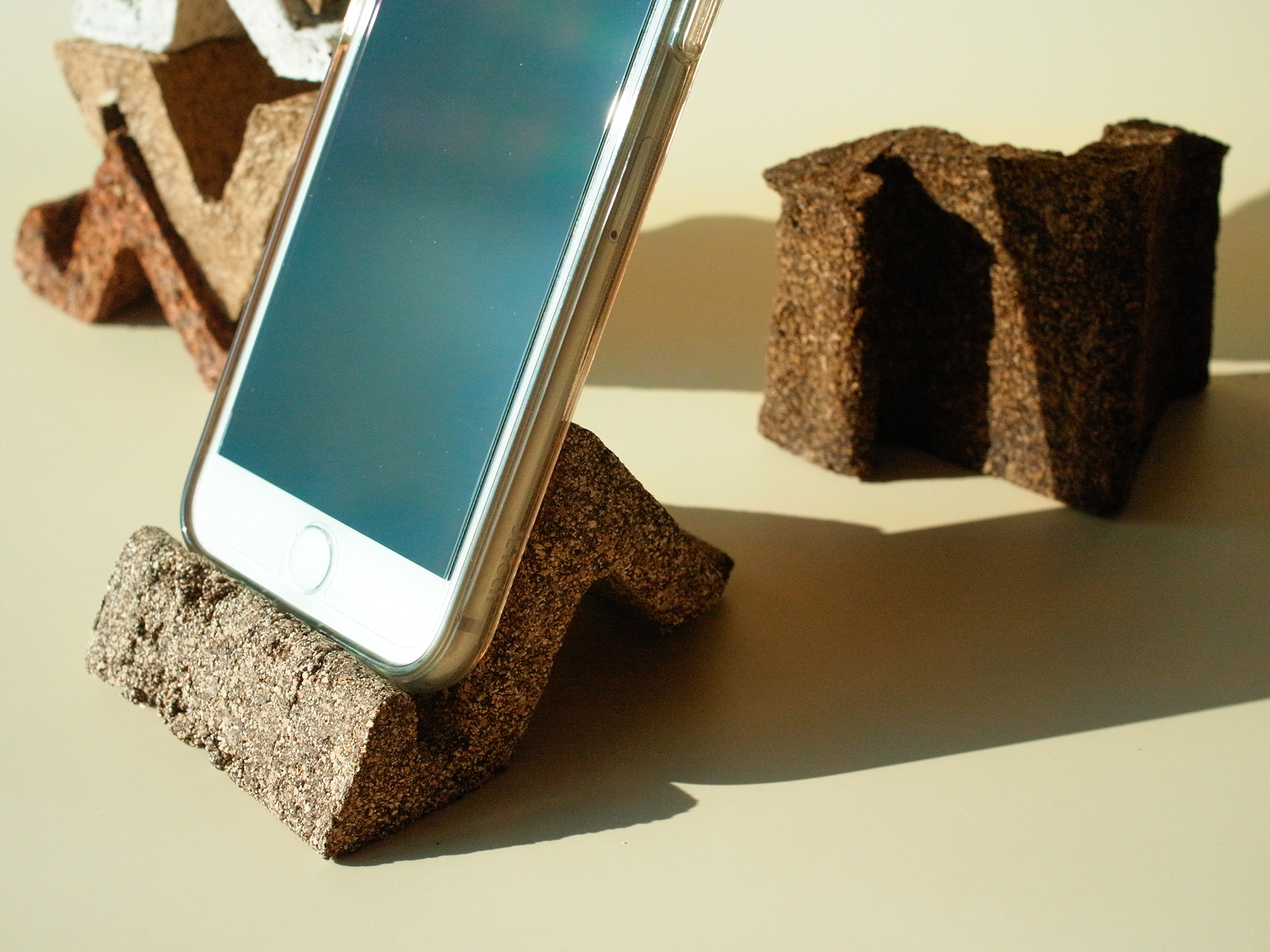
What are the challenges?
"Keeping fungus away from the samples has been my priority. When drying the biomaterials, I need to make sure that I place them in a well-ventilated area and observe them a few times a day. This normally takes several days (2-6 days) to be completely dried, so I need to plan the date of making with my schedule accordingly. For example, if I make a batch on Thursday or Friday, I can’t really be away on the weekend if it’s not dried. Hence, it’s almost a must for me to get making on Monday or Tuesday. Anyway, you can use an oven or a dehydrator to fasten the drying process to only a day; but I avoid this method if it’s not truly necessary."

Why do you find these ingredients/materials interesting?
"To be fair, I’m attracted to every material that doesn’t contain toxic chemicals, is renewable and is naturally biodegradable. You can compost it, you can leave it in your garden without causing harm, it might even fertilise your plants if your ingredients comprise nutritious waste like used coffee grounds — what’s not to love about that? I’m also keen on things I’ve never done before, so the idea of learning how to work with food waste has always been appealing to me. From waste to resource? I’m sold."
Do you feel content with the work?
"Sort of, mostly because they weren’t broken when in used. They’re quite sturdy and fit with smartphones. However, since this is my first prototype, I feel like its shape can be developed more. I just wish I had more time (don’t we all?)."
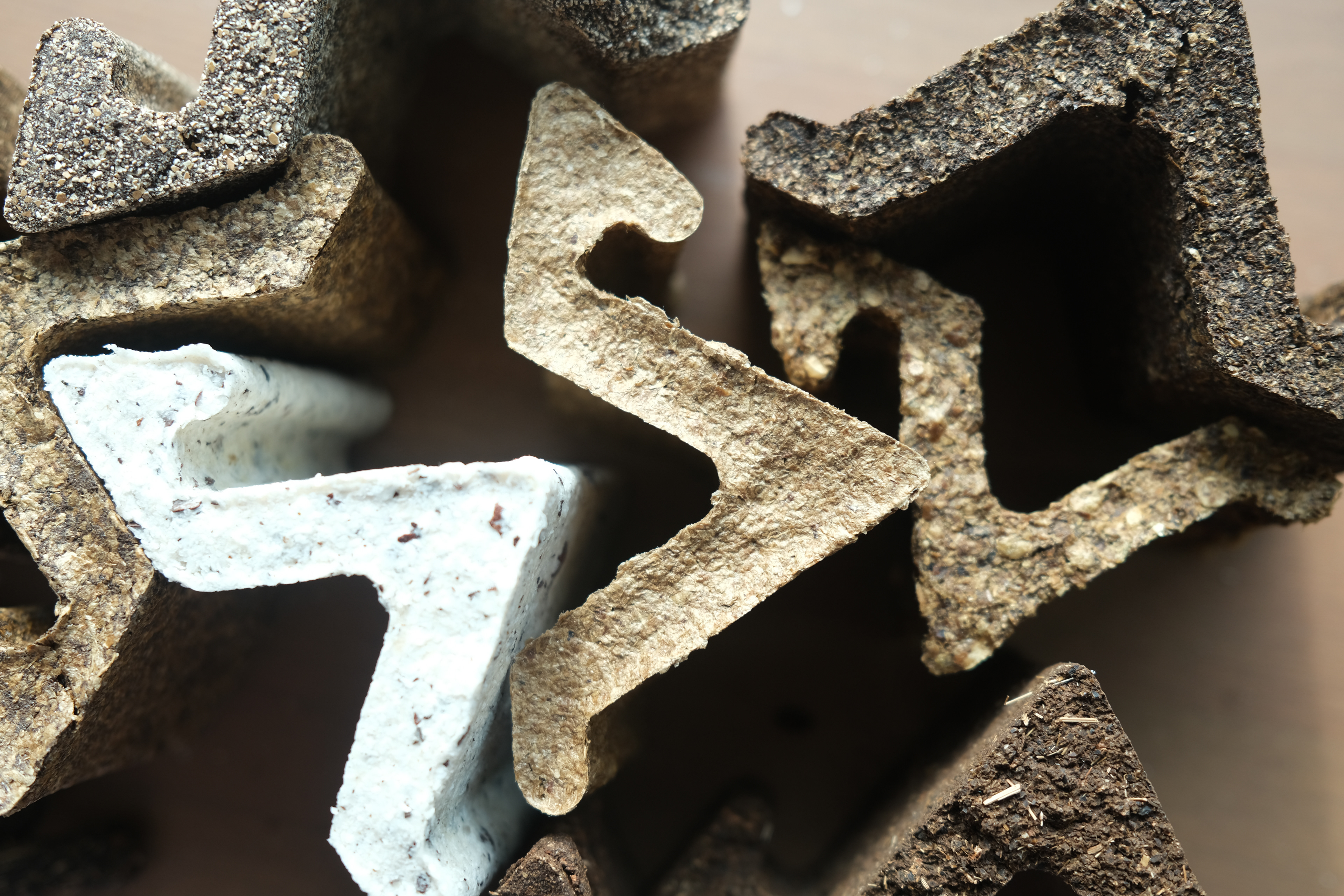
What do/don't you like about working with biomaterials?
"I like the fact that I can keep things away from landfills, even if it’s just a tiny amount, but if more and more people are working with biomaterials, then who knows?
Although, I can’t say that I enjoyed the part where I found out that some of my initial prototypes or samples fell apart when I touched them. This could put you off if you’re not into experimentation and reiteration (fortunately, I’m fine with that). Also, the moulds! I love microorganisms, don’t get me wrong, but sometimes it’s quite tiresome to start over again for the same thing that I’ve already made."
Do you want to explore more with biomaterials in the future?
"Since I’m a creator of Regen Districts, I guess I don’t have a choice, do I?… Well, on a serious note, not only do I want to continue exploring more for my personal projects, but also keep on facilitating people who want to get started or join in this exploration. I really hope I can stick with this."
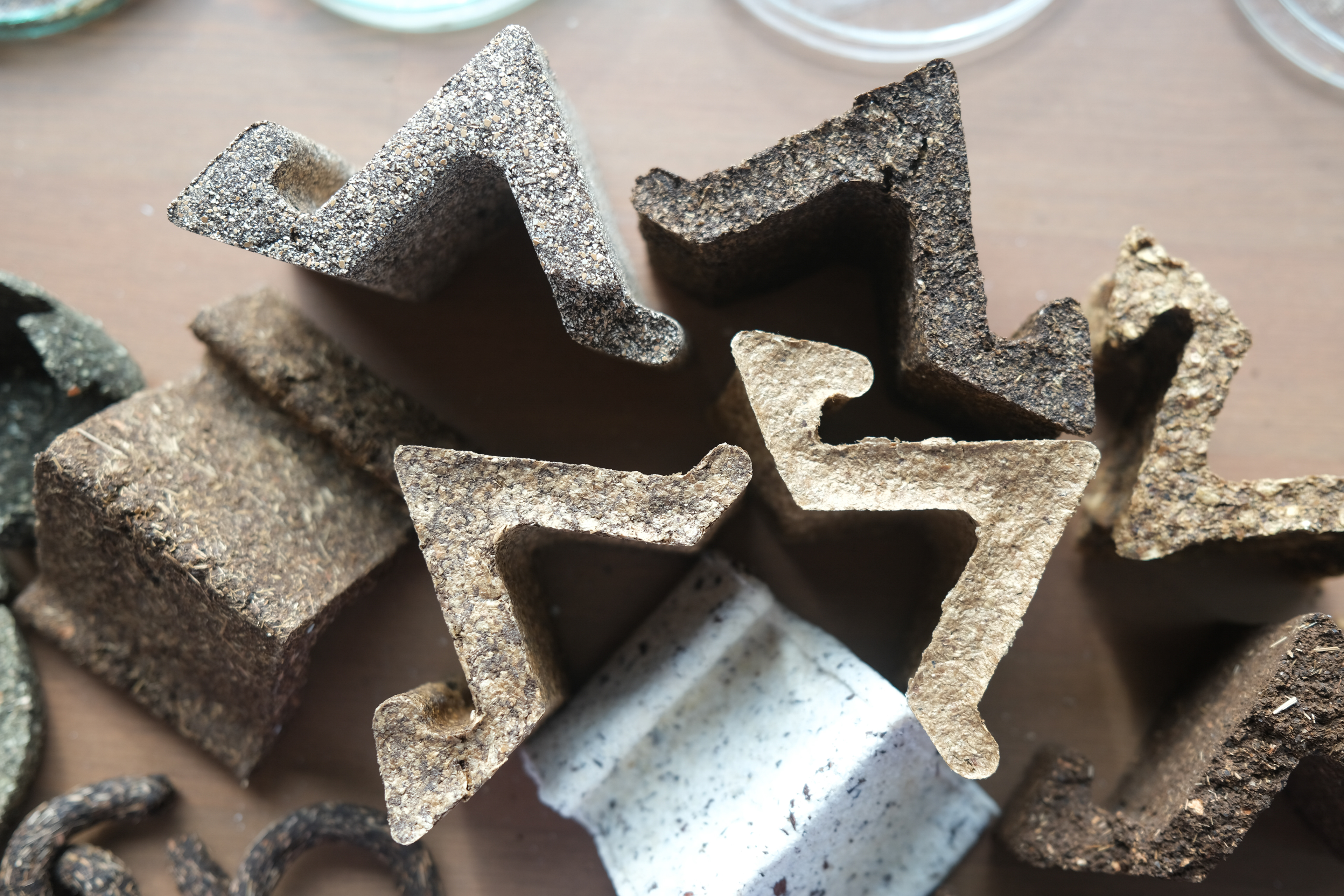
Anya Muangkote - Designer
Anya has a multidisciplinary approach to design, uniting the fields of architecture, music, and product. For her, design is present in every creative practice, in different mediums and scales—from the spaces that we dwell in to the tactile entities that we utilise in a daily routine. Her project outcomes have included object, experimentation, system, design fiction, and tool.
Recently, she has been focusing on designing for circularity with the endeavour to make sustainability appealing. Her interests lie in the field of algaculture, future food, biomaterials, accessible design, distributed systems, public participation, and renewable energy.
Email: anyamuangkote@gmail.com
Website: anyamuangkote.info
Instagram: @anyamuangkote
Facebook: anyamuangkote.am
